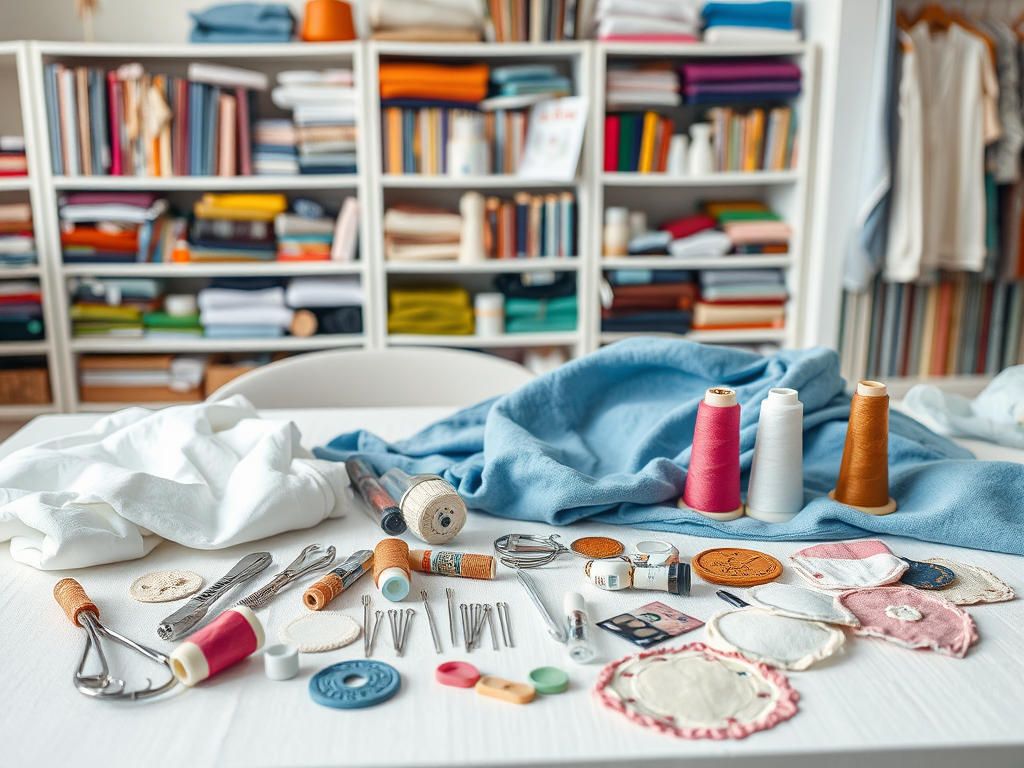In a world increasingly dominated by fast fashion, the concept of clothing repair is making a significant comeback. Many individuals are beginning to recognize the emotional and financial benefits of mending their garments instead of discarding them. Repairing clothes not only prolongs the life of your wardrobe but also allows for a personal touch that can be both expressive and creative. You can breathe new life into old favorites, transforming them into unique pieces that reflect your individual style. Furthermore, taking the time to repair your clothing helps to reduce waste and lessen your environmental footprint. Understanding the art of clothing repair can equip you with valuable skills that are both rewarding and resourceful.
Throughout this article, we will explore practical tips and useful resources for mastering clothing repair. From the essential tools you’ll need to common issues and their respective solutions, you will be well on your way to becoming a clothing repair expert. So, let’s dive into the world of fabric, thread, and creativity!
Understanding the Benefits of Clothing Repair

Embracing clothing repair offers numerous advantages that go beyond just saving a few dollars. First, repairing your garments contributes positively to the environment. The fashion industry is responsible for a significant amount of waste, with millions of tons of clothing ending up in landfills each year. By choosing to repair instead of dispose of, you’re actively participating in a more sustainable lifestyle. Additionally, you will find that many times a simple fix can restore the functionality and appearance of your beloved pieces.
Cost-effectiveness is another significant factor driving the clothing repair movement. Instead of investing in new clothing items, consider the potential savings involved in repairing what you already own. Not to mention, with a little patience and practice, you can develop a sense of pride in your work. Plus, repaired items often hold sentimental value, as they remind you of memorable moments. Clothing repair also encourages creativity, as you can experiment with various techniques and styles, allowing each piece to tell a story of its own.
Essential Tools for Clothing Repair

Before embarking on your clothing repair journey, it’s essential to gather the right tools. Here is a list of must-have sewing supplies that will set you on the path to successful repairs:
- Needles and thread – Different needle sizes and thread colors can make a substantial difference in the neatness and effectiveness of your repair.
- Scissors – Sharp scissors are crucial for clean cuts, whether you’re trimming excess threads or cutting fabric for patches.
- Patches and fabric – Having a variety of fabric scraps on hand allows for creativity when addressing holes or worn areas.
- A seam ripper – This handy tool helps undo stitches quickly when necessary, making your repair efforts much easier.
Common Clothing Issues and Solutions
Every wardrobe will encounter wear and tear, but knowing how to address common issues can extend the life of your clothes. Here are some frequent problems and their solutions:
| Problem | Solution |
|---|---|
| Loose buttons | Sew on the button securely or use a fabric adhesive for a quick fix. |
| Torn seams | Use a needle and thread to re-stitch the seam or utilize a sewing machine for a more durable fix. |
| Worn-out knees | Utilize patches or creatively stitch designs onto the area for a stylish upgrade. |
Hemming Pants
Hemming is one of the most common clothing repairs you might need to undertake. Whether you’ve bought a new pair of pants that are too long or need to fix an old favorite, there are several methods for hemming. You can opt for traditional sewing techniques or use fabric adhesive for a no-sew solution. Each method offers a level of simplicity that is accessible even to beginners. Start by measuring your desired length, then mark it clearly with chalk or fabric markers before making your cut. Don’t forget to account for folding the hem, as this will impact the final length of your pants.
Fixing Zippers
Zipper issues can be frustrating but are often easily fixable. Common problems might include the zipper not closing, being stuck, or even missing teeth. If your zipper won’t close, check for misaligned teeth or fabric caught in the zipper. You can often remedy a stuck zipper by applying a lubricant such as bar soap or lubricant spray. For more severe issues, replacing the zipper may be the best course of action. Investing in a few extra zippers in various sizes can save time and help you quickly fix a malfunctioning garment. With a little practice, mastering zipper repairs can significantly enhance your clothing repair skills.
Creative Ways to Upcycle and Reinvent Clothing
Repairing clothing doesn’t just have to focus on mending; you can also use it as an opportunity to be creative. Upcycling involves transforming your old garments into new pieces, which can be a fun and rewarding project. You might turn an oversized shirt into a trendy tote bag or create a patchwork quilt from multiple fabric remnants. Consider adding embellishments such as embroidery or fabric paint to transform basic items into original artwork. These creative projects can provide a personal touch while allowing you to express your style.
Helpful Resources for Clothing Repair
To assist you on your clothing repair journey, there are numerous resources available for guidance and inspiration. Online tutorials on platforms like YouTube offer step-by-step instructions for various repair techniques. Local community colleges and sewing classes provide hands-on experiences with experienced instructors. Additionally, many communities have workshops that focus on sustainability and textile awareness, where you can learn from fellow enthusiasts. Exploring these resources can make the learning process enjoyable and interactive.
Conclusion
Embracing clothing repair is truly a remarkable skill that intertwines creativity, sustainability, and practicality. Not only can it save you money, but it also allows you to express your individuality in ways that store-bought items often cannot. As you become adept at mending and altering, you’ll find joy in reviving your wardrobe by breathing fresh life into your favorite pieces. By utilizing the resources available to you and experimenting with various techniques, you can transform your approach to fashion. Through clothing repair, you foster a more sustainable lifestyle and contribute positively to our environment.
Frequently Asked Questions
- What are the most common clothing repairs I can do myself? Simple repairs include sewing buttons, hemming pants, and fixing seams.
- Do I need to know how to sew to repair clothes? Basic sewing skills can be beneficial, but there are alternative methods like fabric glue and iron-on patches.
- Where can I learn about clothing repair? Online platforms like YouTube, local community colleges, and sewing workshops offer great resources.
- How can clothing repair help the environment? Repairing clothes reduces textile waste and promotes sustainable fashion practices.
- What should I do if I can’t fix my clothes myself? Consider visiting a professional tailor or alteration service for complex repairs.





